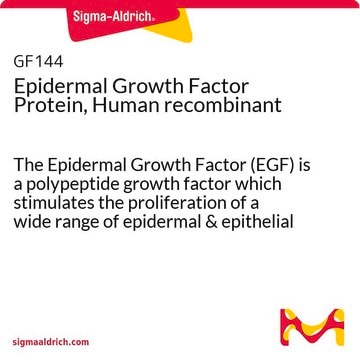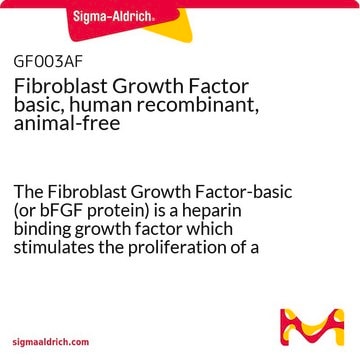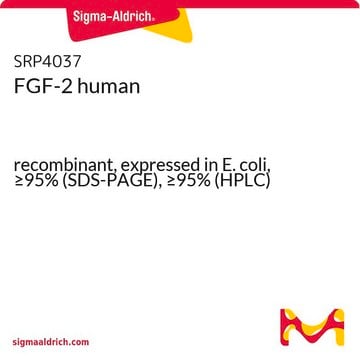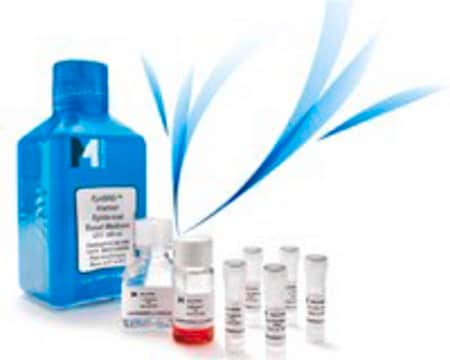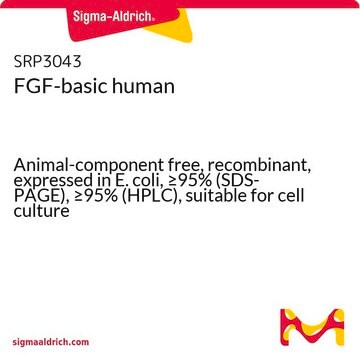GF003
Fibroblast Growth Factor basic, human
>95% (SDS-PAGE), recombinant, expressed in E. coli, suitable for cell culture
Synonym(s):
FGF-2, Heparin-Binding Growth Factor 2, bFGF, beta-FGF
Select a Size
£271.00
Estimated to ship on27 May 2025Details
Select a Size
About This Item
£271.00
Estimated to ship on27 May 2025Details
Recommended Products
Product Name
Fibroblast Growth Factor basic Protein, Human recombinant,
biological source
human
Quality Level
Assay
>95% (SDS-PAGE)
manufacturer/tradename
Chemicon®
technique(s)
cell culture | stem cell: suitable
impurities
<0.1 EU/μg Endotoxin level (of FGF-b)
input
sample type neural stem cell(s)
sample type mesenchymal stem cell(s)
sample type epithelial cells
NCBI accession no.
UniProt accession no.
General description
Application
Optimal working dilutions must be determined by end user.
Linkage
Physical form
Storage and Stability
General applications:
After a quick spin, reconstitute in 0.1M phosphate buffer, pH 6.8, to a concentration of 0.1-1.0 mg/mL. Reconstituted b
Analysis Note
Legal Information
Disclaimer
Storage Class Code
13 - Non Combustible Solids
WGK
WGK 1
Flash Point(F)
Not applicable
Flash Point(C)
Not applicable
Certificates of Analysis (COA)
Search for Certificates of Analysis (COA) by entering the products Lot/Batch Number. Lot and Batch Numbers can be found on a product’s label following the words ‘Lot’ or ‘Batch’.
Already Own This Product?
Find documentation for the products that you have recently purchased in the Document Library.
Customers Also Viewed
Our team of scientists has experience in all areas of research including Life Science, Material Science, Chemical Synthesis, Chromatography, Analytical and many others.
Contact Technical Service
